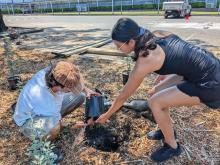
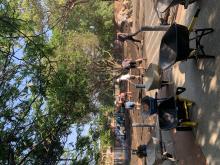

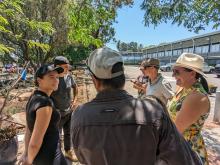
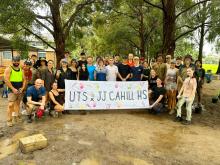
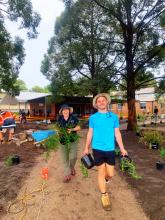

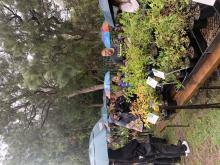
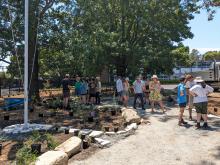
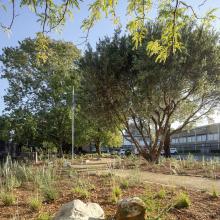
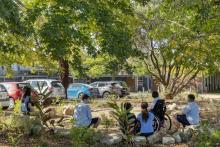
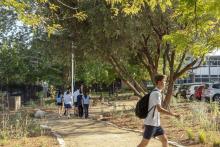
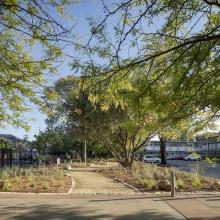
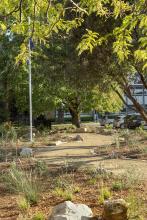
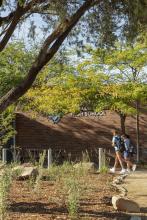
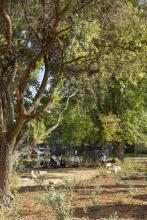
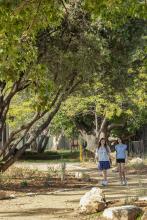
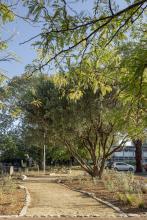
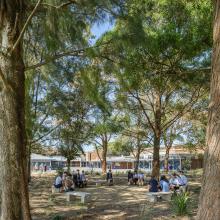
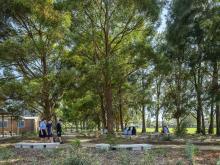
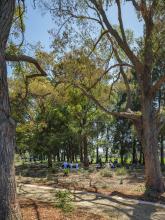

On Bidjigal Country in New South Wales, Landscapes for Well-Being (LFWB) reimagines the school as a shared landscape—open, collective, and alive. In response to the urgent challenges of climate change, cultural disconnection, and mental health decline, this project pioneers a new model for a public school and educational space: democratic, regenerative, and grounded in Country. It was delivered as a university design studio—groundbreaking in its framework as a real-world project for tertiary students, involving a real client, real budget, and real constraints. The LFWB project was not only designed but built by the volunteer team, at a public high school site (JJ Cahill Memorial High School in Mascot, Sydney). The team included University of Technology Sydney (UTS) landscape architecture and architecture students, high school students, teachers, parents, and community members, enabling hands-on collaboration and fostering a lasting sense of agency, belonging, and care.
The project was led by Registered Landscape Architect and Fellow of the Australian Institute of Landscape Architects (AILA), Tanya Wood, and co-created through a pioneering, cross-generational collaboration. Landscape architecture and architecture students from UTS worked alongside high school students and the local community, including local indigenous enterprise IndigiGrow, in an interdisciplinary, egalitarian process. Conventional hierarchies were dissolved—design expertise met lived experience and cultural knowledge on equal ground. Outdoor learning rooms—bush food trails, yarning circles, water-sensitive gardens and quiet refuges—form a living mosaic of care, resilience, and co-authorship.
This is not a static designed masterplan, but an evolving process rooted in listening and long-term stewardship. It prioritises slowness, intergenerational exchange, and reciprocal learning with Country. Each space is cultivated, not constructed—designed to grow, adapt, and belong.
LFWB resonates with the Mediterranean ethos of the commons: plural, participatory, and place-bound. It proposes that schools—like cities—must become porous, inclusive landscapes that support collective flourishing. In an era of fragmentation and ecological urgency, this project is a living prototype for shared futures.








